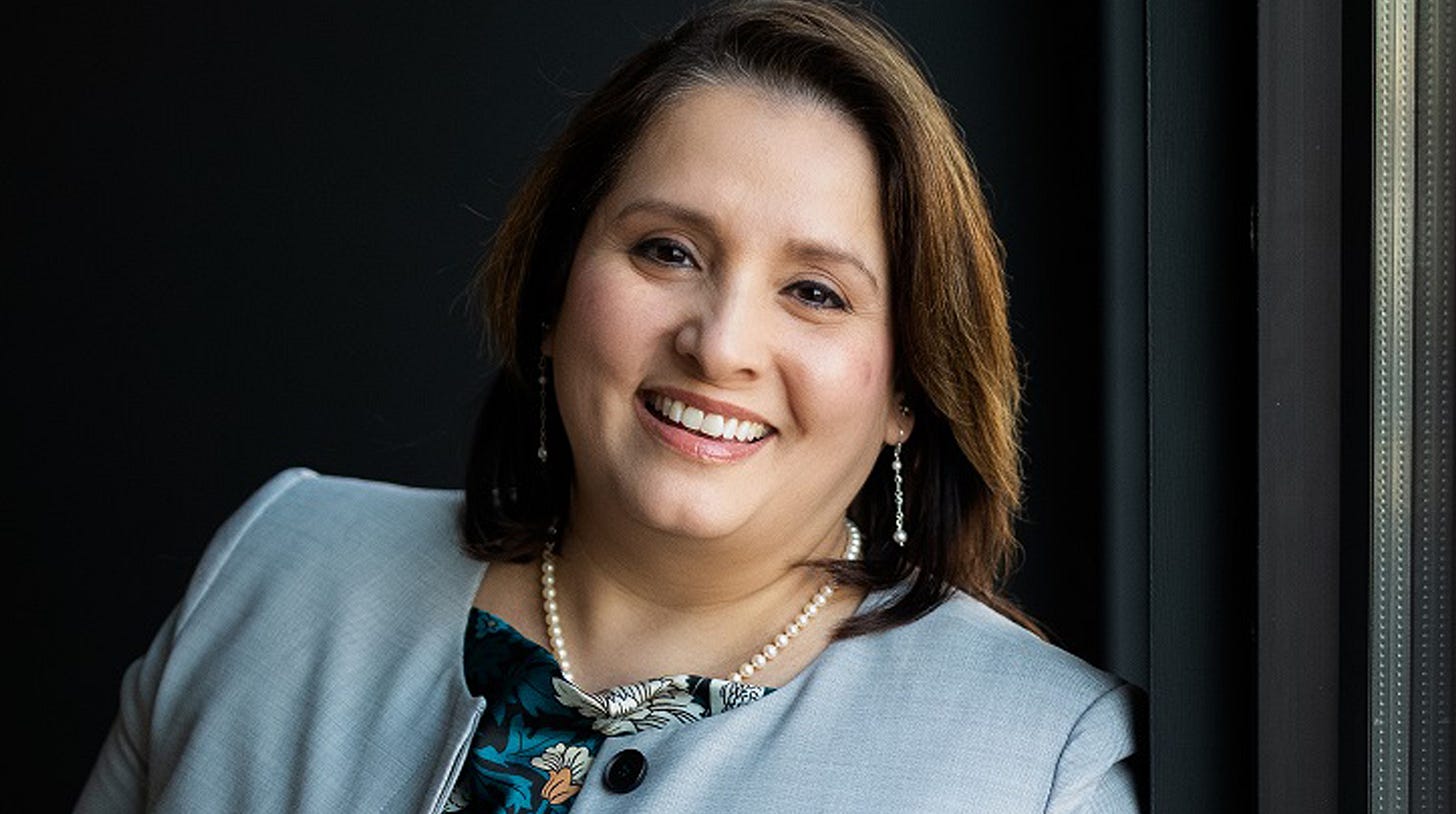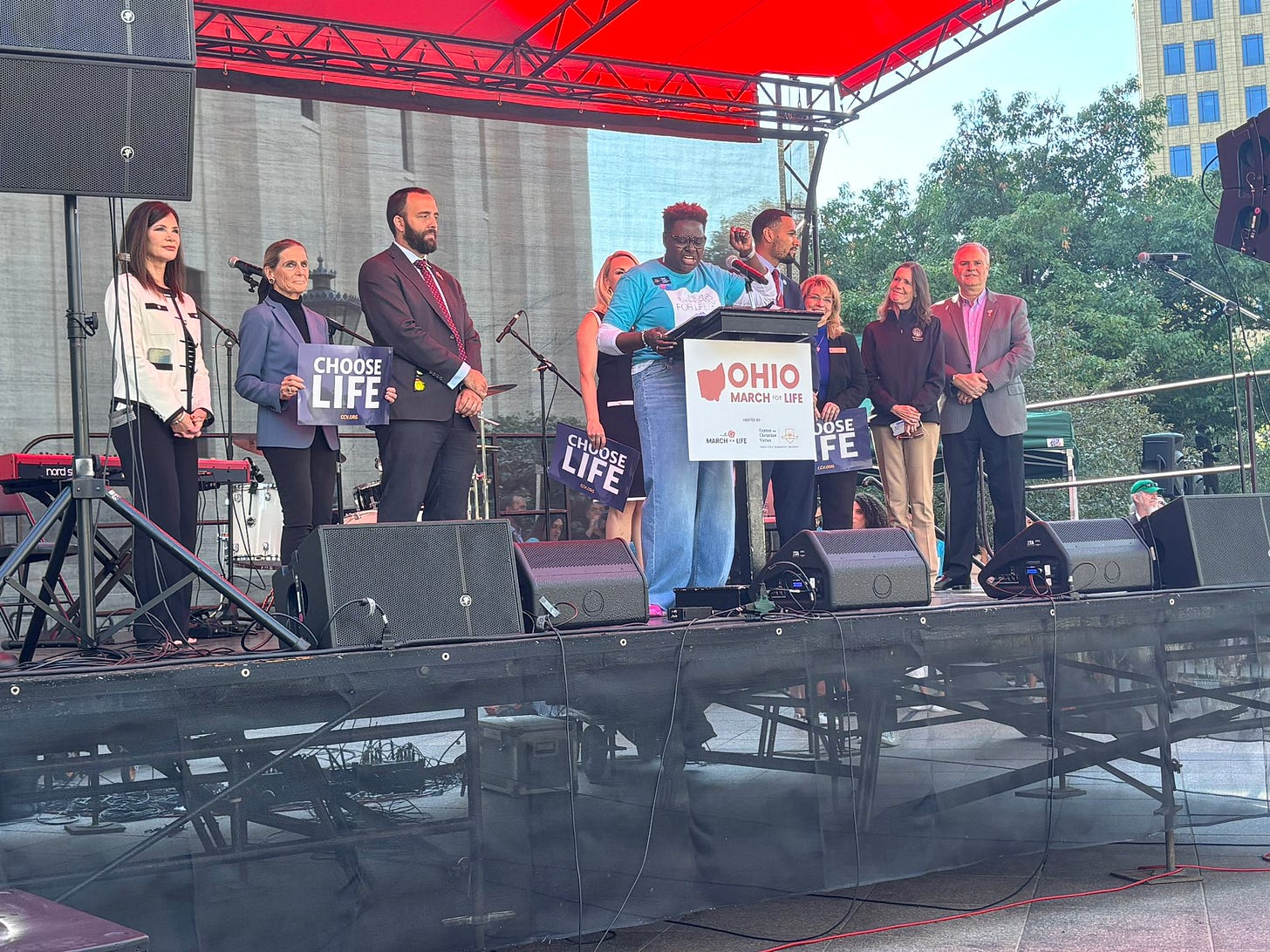The time for transit is now
Council President Shannon Hardin on why Issue 47 must pass, Attorney General Dusty Dave Yost doesn't seem to have many regrets, Brian Hartline has a terminal case of brain worms, and more!
This dispatch is too long for email. Please open your browser to view in full.
I love Columbus in a sick and embarrassing way.
But one criticism I have of my fair city is that Columbus, which The Washington Post once called “an overgrown hick town,” will never be a proper “Big City” until it invests in a mass transit system worthy of the 21st century.
Columbus can make a giant leap in that direction with Issue 47, colloquially known as the LinkUs initiative.
I took the Satanic Six Bus downtown to City Hall on Friday to interview City Council President Shannon Hardin.
As Hardin said in a post-interview tweet—we haven’t always agreed on everything! And the two of us sitting outside City Hall and having a casual chat probably had any employees who saw the scene thinking they were hallucinating.
But Hardin being more than generous with his time shows you how much he wants this proposed ballot measure to pass. And that’s the kind of leadership we need on the issue because, as he was more than willing to admit, we’re going to The Bad Place if Issue 47 fails.
You can view the entirety of our 26-minute conversation in the video above.
We discuss what LinkUs does, what Columbus can learn from Nashville and Austin, why Columbus should trust COTA’s new leadership with a pot of money, why residents who don’t take the bus should care, and what the city is doing to support and grow the bus network outside of rapid transit lanes—among other topics.
If you’re more of an audiophile, no sweat! You can also listen to the interview in mp3 format, complete with any kind of speed slider you might need to suit your hectic schedule:
If 26 minutes is too busy to fit into your schedule, no problem. Be sure to keep your eyes peeled on Twitter and TikTok, as I will be cutting this interview into easily digestible clips as we hurdle closer to Election Day.
Be sure to give President Hardin a follow on Twitter, too.
What follows are some lightly edited highlights of our conversation.
What Columbus can learn from mistakes made in Nashville and Austin

What scares me, and what I think that we have the opportunity to do right now at this moment, is to impact the direction of our city.
When I think about my friends—and I would challenge folks who have friends in cities like Austin or Nashville—They always talk about, “Yeah, my friend lives down in Austin.”
Unless their friend or your friend makes $150,000 to $200,000… They actually don't live in Austin. They live 15, 20 or 30 miles outside of Austin because they have been pushed out because of the growth.
I'm a legacy kid from Columbus. I grew up on the Southside in Southfield.
Nobody in my neighborhood has, and probably in the next 15 to 20 years, will be making $200,000 living in Southfield. That means that if we don't do things differently, knowing that we will add a million people [to the Columbus metropolitan area], this growth will not be good for them.
This is the moment in the next five to ten years that will be about, “How do we try to do growth better than any other city?”
I call it the grand experiment. You look at other cities that have experienced the kind of growth that we're going to experience, and they really haven't done it in a way that has lifted all boats that have made it good for people who look like me and come from neighborhoods that I come from.
What do you say to people who don’t inherently trust the management of COTA due to past performance? Why should we trust them with this new pot of money?
One, we can't let the past get in the way of our future.
This is our time. This is our moment to make a quantum leap forward to ensure folks have opportunity and connectivity. When I think about how we even chose the corridors in which we would make investments,
We made sure that we were focused on areas that truthfully didn't have the density to make us high in scoring for federal funds [for light rail transit]. But had folks who were struggling.
Folks who needed connections to jobs, folks that look like me.
East Main Street is not the Federal Transit Administration’s exciting corridor to go down. They would want you to focus on Northwest. That's the one by Ohio State and Ohio Health.

What I will say about COTA… There is new leadership. Their new CEO, Monica Tellez-Fowler, is new to our city within the last year.
She is a transit user herself. She was a single mom who grew up using transit in Texas. She gets it, and here’s how I know she gets it: Her first job when she got here was negotiating the Transit Workers Union’s new contract.
Many in her organization didn’t want it to go as far as it did. She fought, and I was on the phone with her daily during that contract negotiation. She fought to make sure that in the end, our transit workers are now some of the highest paid in the country.
She understood the impact that it had not just on our families but also on the families that work for her.
And so, I’m really, really excited about her leadership. I’m excited about her experience and her expertise in building out transit systems.
She built out one in Texas. She built out one in Oregon, before she came here. I look forward to the new leadership of COTA.
Are we screwed if, God forbid, Columbus rejects LinkUS?

I really don’t like to think about the alternative. Because one of the big things about this levy is that it brings down $1 billion worth of federal funds and matching dollars.
We have to thank United States Senator Sherrod Brown and Columbus Congresswoman Joyce Beatty. They negotiated and worked hard to get that bipartisan infrastructure deal done.
Other cities are taking that money. It’s going away [if we don’t].
I am concerned that if we don’t pass this now—we should remember that this levy does not raise enough for the entire project. The levy raises about $6.8 billion. The plan is about $8.8 billion.
And so we need those federal funds to come down here. Because the growth is happening around us all day, every day.
It’s not slowing down waiting for us to build transit to absord the folks. And so, every day that we don’t have bus mass transit, every day that we don’t have connectivity, every day that we’re not building the housing that we need along the corridors… we’re falling further and further behind.
Why that actually matters is because it impacts people’s lives. This is why the levy is so big. It’s not just about the Bus Rapid Transit. It’s not just about the sidewalks.
It’s about increasing bus service by 45 percent. Did you know—and I swear, I did not know this a year ago—COTA stops running at 11:30? That shit is crazy to me.
You think about all these third-shift workers. Our third-shift workers don't make a lot of money. That's why they're doing fucking third-shift work.
And the fact that we say just to participate in our economy—not to thrive, but just to participate—you have to have a car is insane.
As we know, in central Ohio, it costs about $12,000 a year if you think about car payments, insurance, upkeep, and the gas required to have a car. So we’re telling folks that probably aren’t making the most money that just to participate or engage in our economy, they have to have this burdensome extra cost.
Why should Central Ohio residents with no plans to take the bus vote “YES” on Issue 47?
So, I went to school in Atlanta.
It was the first time that I ever saw traffic on Sundays. … When we think about adding a million people to the city, eighty percent of us use cars to get to and from work—single-occupancy drivers.
If you do that kind of math, we can’t add 800,000 cars to our streets and think our quality of life will stay the same. It means more traffic for everybody. It means long commute times. You will feel this, you will one-hundred percent feel the impacts of not investing in public transit.
And you know, the thing about transit, it’s about giving options. It’s about making sure there are options right now. We don’t have good options for people to use public transit.
And that’s why, truthfully, it’s no surprise that eighty percent of us use cars to get around because the system has not been good enough.
When we offer something better, more folks will take it. I strongly believe that.
Are we going to see city leadership on the bus? Could we get the mayor on the bus? Do you use the bus? People will ask, ‘How can it be personal if our leaders don’t take the bus?’

That’s the fallacy: “Why should we invest if it doesn’t impact us?”
When we think about growth, and we think about cities and planning and how it all works together, we need this transit system so we can build housing along it and not have parking requirements because we need more housing.
How this impacts me is the necessity for housing is making ti more and more expensive for folks to live in Columbus. My niece last month and her grandmother were kicked out of their $900-a-month apartment that they’ve been living in because now they can be charged $1,600 a month.
It’s not about who takes the bus and who doesn’t. It’s about building a system, a community, where we have the transit that gives options, can build housing along corridors, and relieve some pressure on everyday people.
In 10 years, I will be sitting in my car trying to get downtown. The BRT line going down East Main Street is going to go racing past me, and I will say, “Fuck, I need to get on that.”
And so, I love public transportation. I love biking. But I don’t wan to be inauthentic. I don’t ride the bus every day.
But this is what I’ll tell you: I don’t ride the bus every day because it’s still more convenient to take a car; I live on the far east side.
In 10 years, I will be sitting in my car trying to get downtown. The BRT line going down East Main Street is going to go racing past me, and I will say, “Fuck, I need to get on that.”





